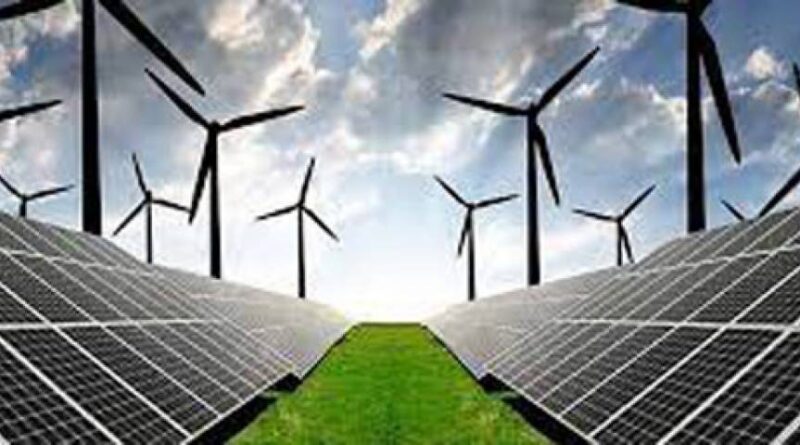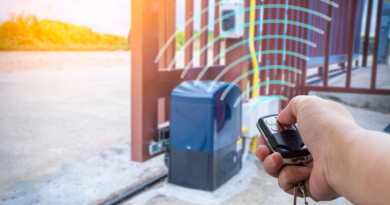Solar vs. Wind: Which Energy Source Is Better?
Which is better for your house, solar or wind power?
Table of Contents
There are benefits and disadvantages to each, but what is the best overall energy source solution for your home? Can you use one with the other? When profit and efficiency are both taken into consideration, which beats out the other as far as your home is concerned?
We’re here to help you with that! Keep reading to get the inside scoop on solar vs wind! Read on!
What Is Solar Energy?
Solar energy is the energy generated by the use of energy gathered directly from the sun. In most cases, this energy is captured through the use of photovoltaic cells or a solar thermal collector.
Photovoltaic cells capture the sun’s radiation and convert it into electricity. This is while the latter utilizes the sun’s radiation to heat water or other fluids. Solar energy has numerous benefits. It is a renewable source of energy, meaning it will never run out. It does not emit any greenhouse gases like other sources of energy, meaning it does not need to be processed for electricity.
Additionally, solar energy is versatile and can be used to power houses, public buildings, and even vehicles. Finally, solar energy is cost-effective in comparison to other forms of energy. Thus, it is an effective and efficient way to generate electricity. It also reduces greenhouse gases in the atmosphere.
What Is Wind Energy?
Wind energy is the process of converting moving air into electricity. Generators are typically used in order to capture the kinetic energy from a moving object such as the wind. Wind turbines are built to capture the energy from the wind and convert it into electricity.
The electricity generated can then be used to power homes, businesses, and other facilities. Wind energy is one of the most abundant, clean, and renewable energy sources available. It emits no greenhouse gases or other pollutants into the atmosphere. This makes it one of the most environmentally friendly sources of energy.
Wind energy has been used as a source of energy for centuries but has recently increased in popularity as an ideal source of renewable energy. It can be generated in a variety of settings, from large-scale wind farms to small, residential wind turbines.
Wind energy has the potential to be one of the most important sources of clean, renewable energy in the future. It is clean, renewable, and more affordable than ever before. With wind energy, we can light up homes and businesses, power our devices, and create a better future for everyone.
Environmental Impact Comparison
Solar and wind energy have a major impact on the environment when compared to other energy sources. Solar energy, which is a renewable energy source, produces no air pollution or greenhouse gases. Its production and installation leave virtually no environmental impact.
Wind energy can cause visual, noise, and bird collisions pollution. The following can minimize environmental impacts:
- large-scale deployments of turbines
- adherence to permitting and monitoring regulations
Wind energy is also a renewable energy source with no electric or air pollutants coming from its production. When looking at their environmental impacts, either solar or wind energy can be considered a safe and clean energy source.
Solar and wind are both preferred sources of energy in regard to their minimal environmental impact.
Location Comparison
Location comparison between solar and wind is significant. This is mostly when considering the potential sources of renewable energy. While both solar and wind are available in most places, their respective strengths vary from region to region.
Wind tends to be more abundant in open, rural areas or windy climates, such as coastal areas. Solar energy, on the other hand, is most commonly found in sunny, warm climates; however, it can be just as effective in cloudy conditions.
Ultimately, it is beneficial for energy consumers to research a specific area. This is to determine which energy source is more abundant and available. This accounts for the infrastructure needs of both sources.
The location must be considered when selecting the best renewable energy source for a particular area. This is because the availability of wind or solar could be the deciding factor upon installation of the energy source.
Cost and Efficiency Comparison
The cost and efficiency comparison between solar and wind energy is an important factor to consider. Although it is difficult to make an exact comparison, several considerations should be taken into account.
Solar energy has generally been seen as a more cost-effective source of energy when compared to wind energy. This is mostly due to the cost of the equipment required to harness the energy. Solar panels are inexpensive. The installation is easy compared to the cost of materials and labor associated with constructing a wind turbine.
Additionally, solar energy typically requires less maintenance than wind energy. Even though solar energy is more efficient, the amount of energy from a given amount of space is dependent on the climate where the system is installed. This affects the amount of sunlight and wind. Thus, the efficiency comparison of solar and wind energy is highly situational.
Harnessing Capacity Comparison
The comparison of solar vs. wind harnessing capacity depends upon the location for the purpose of harnessing. Solar harnessing capacity is higher in areas with higher insolation, i.e., more sunlight.
While more wind is available in certain regions, such as coastal areas, solar energy can be harnessed nearly everywhere. On the other hand, harnessing capacity for wind energy is location-specific. It is extremely dependent on the atmospheric conditions at those locations.
In terms of efficiency, solar energy systems are the clear winner. This comes with an efficiency of up to 25%, while wind turbines have a maximum efficiency of around 15%. In terms of their total harnessing capacity, solar installed capacity globally is currently nearly 4 times that of wind.
While both of these sources of renewable energy have a lot of potential, solar energy has been leading in terms of harnessing capacity. It is on track to replace wind as the main form of renewable energy in the near future.
Regional Viability Comparison
When comparing the regional viability of solar and wind power as a source of renewable energy, it is important to consider the geography of the area. Solar energy is best suited to areas with high levels of sunlight and relatively low cloud cover.
Wind energy, on the other hand, is best suited to areas with high wind speeds and steady wind patterns. Both sources of energy require very specific geographic conditions. This is in order to be successful. Thus any regional viability comparison must take these factors into consideration.
Both solar and wind power have the potential to provide clean, renewable energy to areas that have the appropriate geographic conditions for them to thrive. However, it is also important to consider cost and reliability when making a comparison of their respective regional viability.
Ultimately, both solar and wind power have the potential to provide reliable, clean energy to areas that have the appropriate geographic conditions for their success. It is important that any regional viability comparison consider the factors of cost, reliability, and geography when evaluating the potential for either source of renewable energy.
Regulatory Structures and Policies Comparison
The primary distinction between solar and wind regulatory structures and policies resides within the fundamental differences in the sources of energy. Solar energy is typically generated within the confinements of its user’s property. It is heavily reliant on incentive programs from the local or federal government in order to be economically viable.
Whereas wind from large-scale wind farms requires complex policies for permitting and compliance. Solar tends to follow state regulatory structures and policies more heavily. It is further incentivized by state solar renewable portfolio standards (RPS).
Alternatively, wind power is often regulated by both state and federal entities. It is mainly incentivized by renewable energy certificates (RECs). Generally, both solar and wind power benefit from various tax credits and rebates. This differs from state to state and often provides credits based on the amount of energy produced or electricity saved.
Application Comparison
Solar and wind applications offer a range of benefits and drawbacks when it comes to the comparison between solar and wind energy. Both solar and wind resources can be used to generate electricity. The most common way of doing so is with photovoltaic (PV) or wind turbine technology.
Solar energy can be used effectively to provide electricity on a larger scale. It is a good option for areas where sunny days are abundant. Whereas wind energy is a good fit for regions where breezy days are the norm.
Solar PV applications tend to be more efficient, cost-effective, and less noisy than wind turbines, and with the rise of microgrids, they are becoming increasingly attractive energy solutions.
On the other hand, wind turbines are good at providing energy during peak demand hours and can be used in areas with low wind speeds. Both solar and wind technologies have their own distinct advantages and disadvantages, meaning that when it comes to using renewable energy sources as part of an energy mix, both can be powerful tools.
Pros and Cons of Solar Energy
One of the major pros of solar energy is that it is a renewable source of energy, meaning that it is constantly replenished. No matter how much of it is used, it will never run out.
Furthermore, the sun is the only source of energy that is available in almost every part of the world. Additionally, solar energy technologies are helping to reduce harmful emissions from power plants and are cost-effective over long-term use.
On the other hand, one of the main cons of solar energy is that it is intermittent in nature. This means that the solar energy obtained will depend largely on the availability of sunshine, making it unreliable in some areas.
Additionally, since solar energy generally requires larger space for installation, it might not be suitable for those who have limited land or roof area. Finally, the upfront installation costs for solar energy may be relatively high.
Pros and Cons of Wind Energy
Wind energy offers many advantages over other energy sources since it is clean, renewable, and abundant. On the positive side, wind turbines do not emit any pollutants and use virtually no water. They can also be located in remote areas, away from populated areas, and thus do not take up valuable land used for agriculture or housing.
In addition, the cost of the energy produced is decreasing as technology advances and efficiencies increase. On the other hand, there are drawbacks to wind energy. Wind energy relies on the wind. Its availability is not constant. This means that energy production may be interrupted when the wind is not blowing.
Additionally, wind turbines can be unsightly and can be noisy when operating. Finally, the initial setup cost for a wind turbine can be burdensome. Many locations are not suitable for wind energy due to noise and visual pollution. Therefore, it is important to consider the pros and cons of wind energy before investing in them.
Which Energy Source Is Better?
The debate of solar vs. wind energy sources has been around for a while, and both have their benefits and drawbacks depending upon the situation. Solar is considered the better choice since it is more abundant, renewable, and pollution-free than wind energy.
Solar energy is also more efficient and cost-effective when compared to wind energy over the long term. On the other hand, wind energy is more widely available and can potentially provide more energy than solar energy, which is limited in certain areas.
Additionally, the wind is more affordable to install, which can be advantageous for homeowners planning to make home improvements. Ultimately, it comes down to practicality and cost. Solar might be the more efficient and cost-effective choice in the short term, but wind might be the better option over the long term.
If you want to know more about renewable energy, you can also view here for more.
Learn More About Solar vs Wind Today
In conclusion, solar vs wind are both excellent renewable energy sources that provide substantial environmental and economic benefits. However, the best source of energy will depend on the location and its needs.
It is, therefore, important to consider both sources when deciding on your energy needs. Take the time to determine which energy source is right for you.
If you want to explore the best topics, we’ve got you covered. Check out some of our other blogs today!




